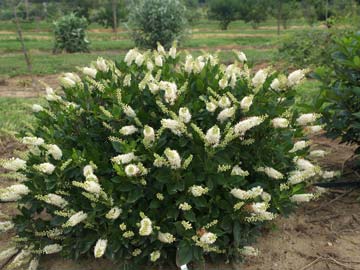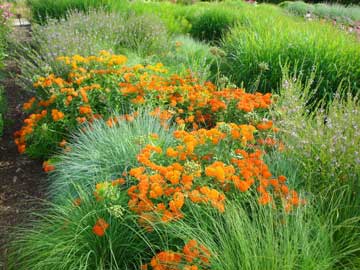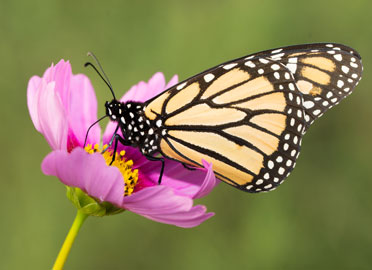 Orange and yellow cosmos brighten the summer garden.
Orange and yellow cosmos brighten the summer garden.
Ó Koko-Tewan/DepositPhotos.com
To a lot of gardeners, drought tolerant plants conjure up scenes of desert or arid lands where cactus stand tall and dried grasses tumble about.
That’s an exaggeration, of course. Even in California and other western and southwestern states where drought is common, landscapes are filled with succulents, cactus and many native plants.
Gardeners throughout the rest of the country also rely on drought-tolerant native plants. These plants work especially well in low-maintenance gardens or in areas that are hard to reach with a hose or sprinkler.
As you plan your garden, consider these three beautiful, garden-worthy, drought-tolerant, North America native plants.
Summersweet
 At about 36 inches tall and wide, drought-tolerant and deer-resistant ‘Crystalina’ summersweet works well in several types of garden settings.
At about 36 inches tall and wide, drought-tolerant and deer-resistant ‘Crystalina’ summersweet works well in several types of garden settings.
Proven Winners
Also called clethra, summersweet is almost a perfect shrub. It can be grown in dry or wet conditions, sun or shade, and it tolerates salt, making it a good choice for a roadside planting. Summersweet has white or pink, fragrant, bottlebrush-type flowers in midsummer. Good for USDA Zones 3 through 9, the leaves turn golden in fall. Most are in the 3 to 4 foot tall and wide range.
Use summersweet as a drought-tolerant specimen plant in a shrub border, as an anchor in a perennial bed or plant several together to form a hedge or seasonal screen. Pruning is not usually necessary for this Eastern North America native shrub. Summersweet is readily available at garden centers and nurseries.
Popular varieties to look for: Hummingbird, Ruby Spice, Sixteen Candles, Vanilla Spice and Sugartina. Bonus: Summersweet is deer resistant, but pollinators like it.
 Orange butterfly flowers rise amid drought-tolerant perennials of ornamental grasses and calamint in Chicago’s Lurie Garden in midsummer.
Orange butterfly flowers rise amid drought-tolerant perennials of ornamental grasses and calamint in Chicago’s Lurie Garden in midsummer.
Lurie Garden
Butterfly Flower
What better than butterfly flower, also called butterfly weed, the 2018 Perennial Plant of the Year? Its orange flowers of midsummer attract bees and butterflies, especially monarchs. It is native to the Eastern and Southern United States and does best with six to eight hours of direct sun.
Monarch butterflies deposit their eggs on this and other members of the milkweed family. The eggs hatch and the caterpillars feed only on milkweed leaves. From the caterpillars come the beautiful monarch butterflies. Butterfly flower grows well in USDA Zones 3 through 9. Fertilize with a granular plant fertilizer according to label directions. This native, drought-tolerant perennial is usually readily available at garden centers. Plant several together to make the best show and attract the most butterflies.
Cosmos
 A monarch butterfly enjoys the nectar from a pink cosmos.
A monarch butterfly enjoys the nectar from a pink cosmos.
Ó Okiepony/Depositphotos.com
A lovely flowering annual, it’s a favorite of hummingbirds, butterflies, bees and other pollinators. There are two types: Sulphur cosmos, which has orange or yellow flowers, and garden or wild cosmos, which has pink, white, picotee or mauve flowers. Each is a native of Mexico.
You can find these drought-tolerant, summer bloomers in garden centers ready for transplanting, or they are easy to grow from seed. Plant in a sunny spot, and fertilize with Natural Start by GreenView All Purpose Plant Food, according to label directions. Plant lots of them because cosmos is a wonderful cut flower, too.
By Jo Ellen Meyers Sharp